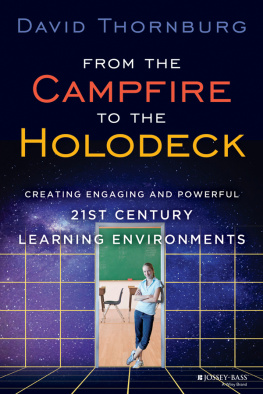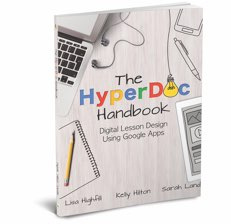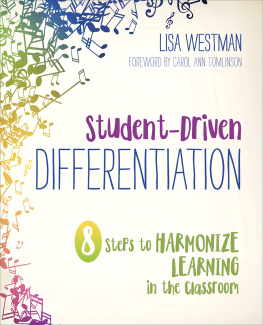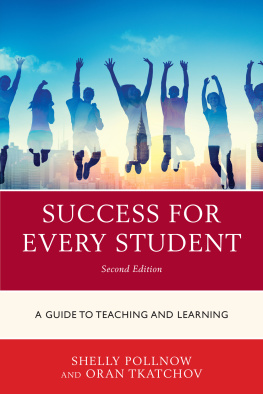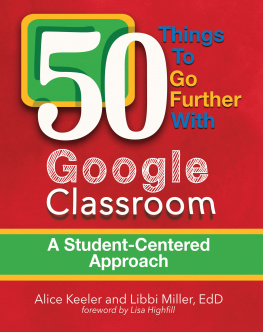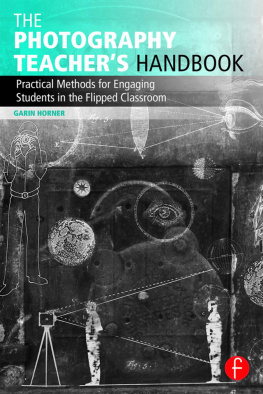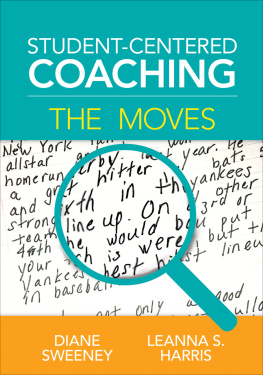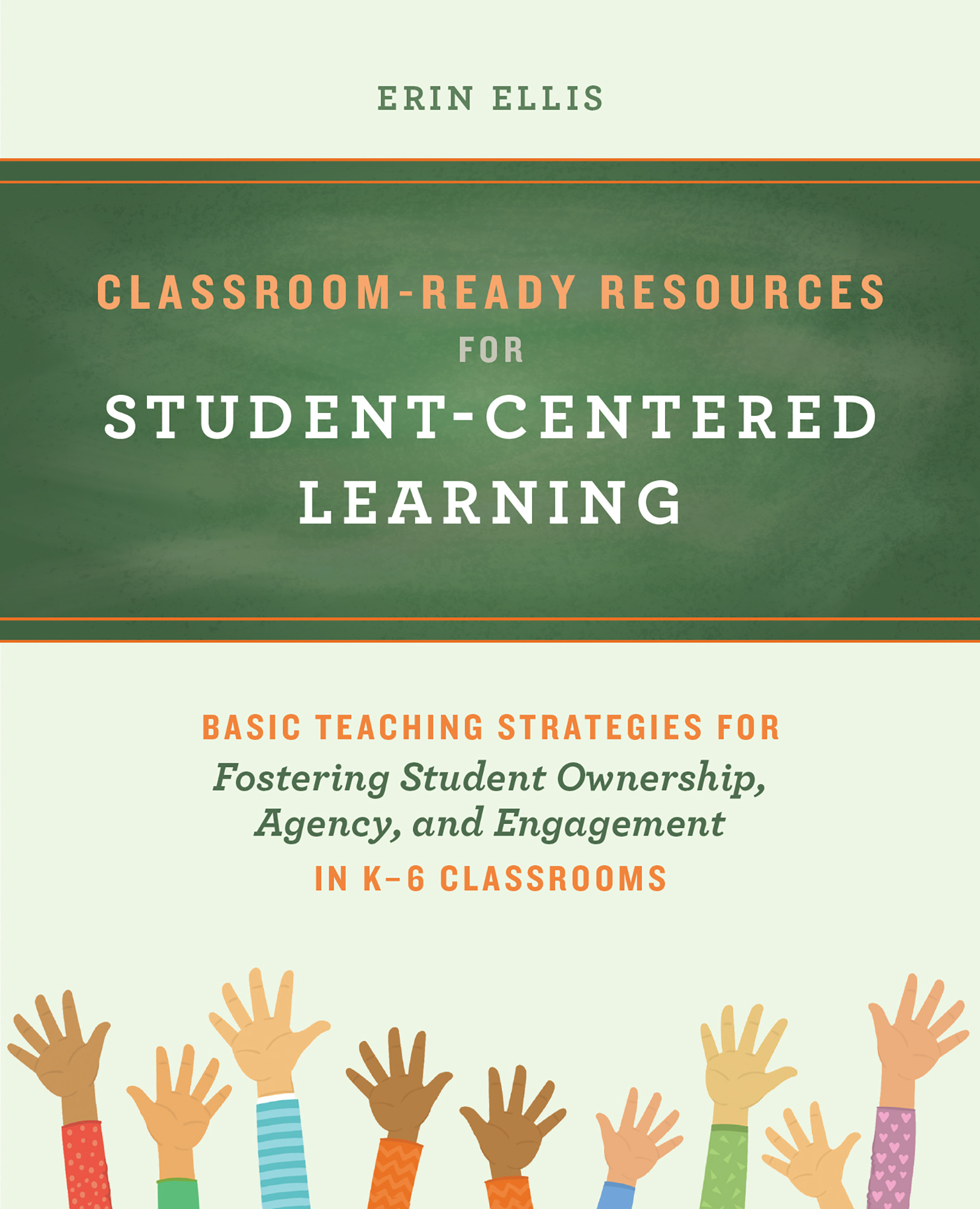Contents
Guide
Erin Ellis
Classroom-Ready Resources for Student-Centered Learning
Basic Teaching Strategies for Fostering Student Ownership, Agency, and Engagement in K-6 Classrooms
Text copyright 2022 Erin Ellis. Concept and design copyright 2022 Ulysses Press and its licensors. All rights reserved. Any unauthorized duplication in whole or in part or dissemination of this edition by any means (including but not limited to photocopying, electronic devices, digital versions, and the internet) will be prosecuted to the fullest extent of the law.
Published by:
Ulysses Press
PO Box 3440
Berkeley, CA 94703
www.ulyssespress.com
ISBN: 978-1-64604-353-8
ISBN: 978-1-6460-4378-1 (eBook)
Library of Congress Control Number: 2022932301
Acquisitions editor: Kierra Sondereker
Managing editor: Claire Chun
Editor: Kathy Kaiser
Proofreader: Cathy Cambron
Front cover design: Amy King
Interior design and layout: what!design @ whatweb.com
Artwork: chalkboard (cover) Hywit Dimyadit/ Tasty_Cat/shutterstock.com
INTRODUCTION
Lets face it, some days teaching in elementary school feels like trying to herd catsthat is, if the cats talked way too much, constantly needed to use the restroom, and accidentally called you Mom half the time. This often leaves educators in the position of prioritizing. What is my most important task today? We may answer that we want to help our students feel safe and loved, understand and master the content, or learn life skills. Most of us would not often prioritize applying professional development or new strategies, especially on those days when we are confronting a frenzy of cats. But in the case of student-centered education, not applying this approach in our classrooms would be a disservice to our students and to ourselves as well.
Student-centered education developed from constructivist theories on learning. Constructivism started by looking at one of the most important concepts we learn in early childhood: language. We do not learn to speak our native language by sitting behind a desk while a teacher explains it to us. We learn our native language by hearing it modeled and trying it out ourselves. Along the way, we make many mistakes, some of which are corrected for us, but most of which we discover ourselves through our interactions. Our motivation for learning language is predominantly intrinsic, as the applications of language are apparent.
Constructivists looked at learning language as a prime example of individualized learning and wondered why this approach wasnt being used in education. The blending of this theoretical base with the realities of the modern classroom created student-centered learning. In this type of education, rather than all learning originating from the teacher, students are given choices and opportunities to discover and create their own learning. The educator plays a large role by modeling and facilitating problem solving, as well as providing support throughout the learning process. Many teachers have already begun making the shift toward creating a student-centered classroom, and the results speak for themselves.
SUPPORT FOR STUDENT-CENTERED LEARNING
As educators, we want to keep students engaged in learning. Research has shown increased engagement is directly linked with increased student achievement. Student-centered education places great value on engagement and employs many engagement strategies. With this approach, students consistently explore their passions, monitor their learning, and make connections. So its no surprise that studies have found that greater student engagement, and therefore greater student achievement, are more apt to occur in schools with student-centered learning. A study of four schools that served a large proportion of low-income and minority students found that students who had a student-centered education were more likely to experience several positive effects (Friedlaender et al., 2013). Students who had this type of education were more likely to connect with and find purpose in school. They also were more likely to outperform similar students on standardized tests, graduate from high school, and attend postsecondary schools. Given the achievement gaps among students of different incomes and races in the United States, we must consider what educational methods best address these gaps (Friedlaender et al., 2013).
Another study, this one of more than sixty schools, found that in each school there was a positive effect on student achievement when student-centered learning practices were implemented (Pane et al., 2015). But because student-led learning comes in a variety of shapes and sizes, the size of the positive effect also varies. Schools and classrooms that had the largest and most consistent positive effects were schools that built in important supports to student-led learning. This included providing their students with social-emotional resources and encouraging the development of meaningful relationships between students and teachers. It was also important to have collaborative teamwork among educators so that they could fine-tune their approaches, create new ideas, and compare data. Additionally, schedules allowed for students to work on their explorative or project-based learning for larger blocks of time (Pane et al., 2015).
Specific components of student-centered education have been studied in depth. One such component is personalization. When students names or interests were included in instruction, direct increases in positive attitudes toward learning, motivation for learning, and demonstration of learning were seen. Student agency is another component of the student-centered approach that has research behind it. Researchers investigated the effects on students who were taught self-regulation and metacognitive strategies. These studies found that students who were taught such strategies exhibited improvements in performance and engagement. As there are many components that could be considered part of a student-centered approach to education, further research is needed to discover exactly what aspects of student-centered education are leading to what benefits (Kaput, 2017).
KEY COMPONENTS OF THE STUDENT-CENTERED APPROACH
The principles of student-centered learning vary with the source. But the general consensus is that student-centered learning should include at least some, if not all, of the following components:
STUDENT OWNERSHIP AND AGENCY. Perhaps the most important tenet of student-centered learning, student ownership and agency are what clearly make education revolve around students as individuals. Creating student ownership of learning requires educators to provide regular opportunities for students to self-assess the progress of their learning, what they are doing well, and what they need to improve upon. Therefore, students must become skilled at metacognition by seeing it modeled and by taking the time to reflect. Student-centered teachers show students what it looks like to think about their learning and recognize the steps that need to be taken to reach their goals. This means that students should be a part of setting goals and the expectations for reaching these goals. In contrast, with teacher-centered learning, students have their goals and expectations dictated to them. Student-centered learning converts goal setting into a collaborative process between students and their teachers, as well as their peers. Along with choosing goals or learning targets, students should also have choices throughout the learning process, whether it be how they convey their learning, what topics they specifically learn about, or the medium by which they learn. Providing chances for choice is the foundation of creating student agency, and thus an important factor in student-led education.



